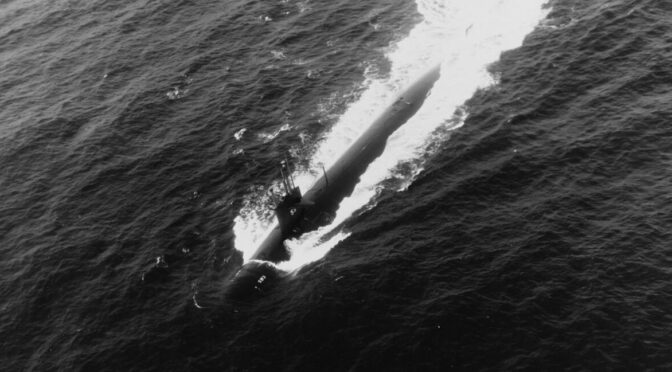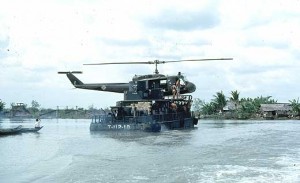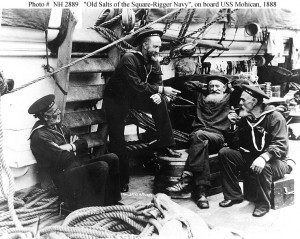By Ryan C. Walker
During my short tenure as a submariner in the U.S. Navy, from 2014-2019, I observed the friendly rivalry between sailors who serve on SSN (fast-attack boats), SSGN (frequently shortened to GN boats), and SSBN (Trident boats). Fast-attack sailors like to brag about port calls and joke that sailors on the other vessels are part-time sailors due to the Gold/Blue crew system. For their part, Trident and GN sailors generally have a higher quality of life. They rarely hot-rack, have a more predictable schedule and have more space for crew morale. As much as fast-attack sailors envy these benefits, they know, even if they don’t want to admit, our Trident and GN brethren earn their pay. They do spend extended periods on patrol, have fewer opportunities for port calls, and their time at sea is monotonous. Despite the variations between these subcultures within the submarine fleet, the nuclear culture that stresses safety through rigorous engineering, procedural compliance, and training is still the common bedrock of identity on all platforms.
Previously, two separate cultures existed within the submarine fleet, diesel and nuclear. This article will discuss how the USS Thresher tragedy on April 10, 1963 hastened the end of the binary approach and eventually led to the single bedrock foundation that submarine culture now rests on. The United States Navy’s Submarine Safety (SUBSAFE) Program is written in the blood of the 129 souls who died on the USS Thresher and remain on eternal patrol. Diesel submarine culture, epitomized by the slogan “Diesel Boats Forever,” would be replaced by the cold, calculating, and rigorous nuclear culture design by Hyman G. Rickover. Current proposals to reintroduce diesel submarines in the Navy’s fleet focus on fiscal and operational factors, but the potential risks to its submarine culture should also be considered. This article will examine how the two communities previously interacted as diesel submariners were forced to take on the extra burden of supporting a new technology while that same technology was replacing them. It will further offer that this is not inevitable, but should reintroduction proposals ever gain currency, the conversation on submarine culture should be a major topic by political and military leaders.
Documenting the Tragedy
The Thresher has an enduring effect on the mentality of the present-day submarine force, forming the basis for many training sessions and case studies. Publications, many from the past decade, reflect the memory of the Thresher is well. Many of these have a general focus, examining how and why the Thresher was lost,1 and how the Thresher disaster can serve as case studies for public affairs, oceanography and naval professionals.2 However, the publications examining how the Thresher disaster inspired changes in submarine culture, shipbuilding design, and SUBSAFE are of particular interest.3 James Geurts’ article in USNI Proceedings discusses how the loss profoundly impacted naval officer’s training, arguing procedures to fully employ the capabilities of nuclear-powered submarines only accelerated in the aftermath, stating the “Navy was still locked into training officers for duty on diesel-electric boats, even though the boats quickly were becoming obsolete.”4 Synthesizing these articles and connecting their arguments shows that the end of the binary submarine culture was a positive change overall.
Rickover, Nuclear Power and SUBSAFE
It is generally accepted that Hyman G. Rickover was the architect of nuclear submarine culture and the driving force for the quicker transition to nuclear culture by promulgating the practices, procedures, mentality and culture of as the standard for all submariners. As Geurts would summarize:
“Despite these demonstrations of superiority, the Navy’s operational thinking carried over from diesel-electric boats to the nuclear submarines. The distinction… was not yet recognized or emphasized during submarine school training. This fundamental failure in thinking contributed to the Thresher disaster, after which the Navy finally met the new reality of nuclear-powered submarines with fresh operational thinking.”5
How the evolution occurred still requires research. A common misperception of the ship’s status at its loss was that it was conducting its first deep dive. Following its commissioning the Thresher had undergone extensive testing, befitting its status as the first of her class. Built in Portsmouth Naval Shipyard in Kittery, ME, the ship completed all its acceptance trials, shakedown availability, and even participated in some fleet exercises.
It came as a complete surprise to all involved when it was lost with all hands, the ship’s former medical officer Arthur L. Rehme shared his experience onboard and that he felt confident in the crew, even sharing the first time they reached a record depth the ship cheered.6 The loss was truly unexpected, it is a testament to contemporary submarines that they were willing to persevere despite the loss. Crew member Ira Goldman, who narrowly avoided death by attending a training school, continued to serve in the submarine fleet, retiring as a Master Chief.7 Rehme did not continue as a submariner, but decided if the men on the Thresher could give their lives in service of their country, he too could continue to serve.8 Their loss served as an inspiration for change, but also an iron determination for those who faced the same risks.
Almost immediately, a Court of Inquiry was organized to discern why the Thresher sank, which canvassed a wide variety of persons. Obvious candidates such as the recently relieved commanding officer (CO), Dean L. Axene and watch standers on the Skylark were involved, but so too were people with only a passing military, technical or familial background. The Court concluded that the Thresher was lost due to flooding casualty from piping in the Engine Room that shorted out vital electrical equipment, a decision that would have consequence for construction, maintenance, and repair of new submarines. This recommendation was influenced by Rickover, who insisted on being interviewed by the Court of Inquiry. Instead of defending the nuclear program, he displayed his shrewd ability to identify problems in a now famous quote:
“I believe the loss of the THRESHER should not be viewed solely as the result of failure of a specific braze, weld, system or component, but rather should be considered a consequence of the philosophy of design, construction and inspection, that has been permitted in our naval shipbuilding programs. I think it is important that we re-evaluate our present practices where, in the desire to make advancements, we may have forsaken the fundamentals of good engineering.”9
It was no accident that he had insisted to be a witness. According to his biographer, Francis Duncan, he thought the testimony “could be an opportunity to show how the technical standards that he had insisted upon should be applied to other work.”10 Rickover came with the intent to promulgate what would become SUBSAFE, offering an immediate solution in the form of nuclear culture.
The shift may have happened over time as nuclear-trained officers with no experience on diesel submarines became the norm. The influence of the Rickover-designed training program is still evident from the admirals he trained down to junior officers learning the principles for the first time. The expectations established for nuclear trained enlisted personnel would also be expected in the forward compartment, or “cone.” While there is still a strong divide between “nukes” and “coners,” both groups have the mindset of engineering indoctrinated through training and qualifications. The disaster itself acted as a catalyst for change, alongside the Scorpion, to implement Rickoverian philosophy in the submarine fleet.
SUBSAFE is among the crowning administrative and engineering achievements of the USN. It became such a successful quality assurance program that other organizations looked to it for inspiration on their own programs. In the aftermath of the Challenger disaster, NASA was recommended to look “to two Navy submarine programs that have “strived for accident-free performance and have, by and large, achieved it – the Submarine Flooding Prevention and Recovery (SUBSAFE) and Naval Nuclear Propulsion (Naval Reactors) programs.”11 SUBSAFE is a body of practices that became a mindset and an essential building block of culture for the present submarine culture. It was no longer, as Geurts had stated succinctly, a diesel dominated fleet, but a nuclear fleet first and foremost, as reflected by Navy recruitment and informational topics by the period.12
The Origin of Diesel Boat Forever Culture: Diesels Boats Perform an Essential Transitional Duty
The delays in nuclear submarine construction and their lengthier overhaul periods, relative to diesel boats, would prove to have long-term consequences that are still present today. The immediate effect was to increase the costs and time periods construction and overhaul would consume. As a result, operational commitments often fell to diesel submarines as they took on the missions of the nuclear submarines stuck in overhaul. Even in the present day, overruns in cost and time are frequent and accounted for but are merited in the name of safety. Diesel boats would serve an important purpose during the early implementation of SUBSAFE in new construction, holding the line, but frequently forgotten in the public Cold War narrative of nuclear boats that seemed to get the attention as the future.
The Submarine Force Library and Museum archives carry the development of this culture epitomized by the Diesel Boat Forever (DBF) pin. The DBF pin was created by the crew of the USS Barbel, with an enlisted sailor Leon Figurido drawing it for a contest and adopted by the command, conflicting accounts offer 1967-1971 as the period they were made.13 The pin was explicitly designed as the answer to the Polaris Patrol Pin and inspired by the Submarine Combat Patrol Pin. Two bare chested mermaids clasping hands while laying over a submarine silhouette with the immortal acronym, “DBF” surrounded by holes for stars. According to Meagher, the former commanding officer (CO) who approved the project, John Renard, confirmed instead of receiving a star for each patrol, DBF pins would receive a star “each time a diesel boat you served on had to get underway for a broke-down nuke.”14 There was still a surprising amount of buy-in from diesel sailors in higher chains of command. The pin was unofficially condoned to the point that the CO of the Tigrone held a ceremony awarding RADM Oliver H. Perry jr., who had previously served on diesel boats.15 Smith in his interview with Adams also remarked other memorabilia, such as Red DBF Jackets were a part of the culture and sold out as soon as they were back from their deployment, reflecting an appeal for a new identity formed in the shadow of the new nuclear submarine culture.16
Unsurprisingly, this was greeted coolly by nuclear submariners. The animosity was shared, where Smith recalled fights that broke out “between the ‘nukes and the reds’ when they wore their jackets ashore.”17 This further indicates the budding nuclear culture was prideful enough to take offence at the “other” fleet. To fully illustrate the diesel culture of the submarine fleet, look no further than the 1996 film, Down Periscope. The film follows an unconventional Submarine Officer LCDR Dodge taking command of the decrepit diesel submarine, the USS Stingray. Manned by what can only be politely described as the dregs of the Navy, the Stingray crew embraces this mentality, performing unorthodox tactics and techniques throughout the film. The director elected to utilize a retired enginemen named Stanton, as the chief engineer. It is from him we hear the clear signaling of intent of the film when he yells at the climax of the film, “This is what I live for! DBF!”18
While never in doubt due to the subject of this film, the true intent of the film was illuminated in this moment. This pithy aphorism epitomizes the romanticized diesel sailor; a mythos that has not disappeared in the nuclear navy. The final, romanticized aspect of the film is fleshed out when Dodge rejects his promotion to command a new, nuclear powered Seawolf class submarine, opting instead to stay with the barely seaworthy, antiquated, hopelessly outmatched Stingray.19 In many respects, its origins lie in the hero worship of WWII submariners who did not need procedures and the high attention to safety paid in the modern Navy yet still brought the fight to the enemy and performed admirably. It is spoken in the same vein spoken by resentful sailors from the age of sail who viewed their younger generations in the age of steam as soft, jibing them comments such as “once the navy had wooden ships and men of iron; now it has iron ships and wooden men.”20 There is no doubt in anyone’s mind who has read the accounts from diesel sailors that it was an undoubtedly difficult life.21 Nuclear submarine crews are lucky by comparison, but submarine duty is rightfully still considered to be difficult in the present day.
For all intents and purposes, there were two distinct cultures within the submarine fleet, but principally from 1963-73, as diesel submarines were replaced. Throughout the 1970s Meagher recalled “scores of career electricians and engineman were forced to “surface” as there was no room for them on Rickover’s boats.”22 Smith agrees they knew that they were a “dying breed,” but also adds “we’re damn proud to be diesel boat sailors.”23 Eventually, the unofficial pin was banned, and midshipmen were kept from diesel boats from 1973 onward, with some rumors stating it was due to concerns midshipman were being indoctrinated into diesel culture.24 This was part of the transition to a nuclear dominant force as the tragedies of the Thresher and Scorpion helped accelerate it. Diesel submarines are an important part of submarine heritage that is talked about today. The last combat ready diesel submarines, Barbel, Blueback and Bonefish, were decommissioned between 1988-90, meaning the operational capacity of the submarine force has been exclusively nuclear for over thirty years and had been dominated by nuclear trained officers for decades before.25
Proposals to Adopt Diesel Boats in the Present Day
Thus, the expectations for all sailors, both in engineering and non-engineering realms, are dictated by the principles instilled in them by Rickover’s nuclear program. The USS Thresher disaster was the defining moment for both the submarine fleet and the U.S. Navy itself. It was decided in the immediate aftermath to pursue an ambitious program that would touch all aspects of submarine culture, in construction, maintenance, overhaul, training, and operations. It would make the trends set forth by Hyman G. Rickover the norm, not the exception. The Thresher disaster was the moment the US Navy reinvented itself to embrace the mentality to become the force it is today.
Despite the success of the nuclear force, discussions on adopting the diesel submarine have resurfaced. Proposals such as the award-winning essay written for USNI Proceedings by Ensigns Michael Walker and Austin Krusz are frequently published. “The U.S. Navy would do well to consider augmenting its current submarine force with quiet, inexpensive, and highly capable diesel-electric submarine.”26 The argument is based on the increasing capability of the diesel submarines, the high cost of maintaining nuclear submarines, and the merit of increased operational flexibility. These proposals have merit and are popular outside of naval professionals, the citations of Walker and Krusz reflect the wide scope of popular interest.27
A discussion not mentioned is a potential return to the binary culture separating diesel submarine crews and nuclear submarine crews. DBF culture formed as a resentful reaction to the nuclear submarine crews for simultaneously giving them a greater portion of work and threatening their role in the Cold War. SUBSAFE can be bedrock of identity for a potential diesel submarine culture in the USN, but the cultivation of such a culture must be carefully managed and planned. Diesel submariners require a different mindset, and it is likely they will create some of their own norms; the question must be asked: does the Navy want this outcome? Or does it value the ability of career submariners to move between platforms with similar cultures and mindsets without having to worry about what their previous hull had been?
Nor will there be any insight seen in foreign markets in terms of safety. There have been several high-profile diesel submarine disasters in recent years. The KRI Nanggala 402 in 2021, the ARA San Juan in 2017, and the PLAN Ming 361 in 2003 are among the most recent and well known. It would be a mistake to assume nuclear submarines in other nations are immune to this either. Conversely, no US submarines built using the rigorous requirements in SUBSAFE have been lost to any disaster. The safety record is impressive and is due to more than the processes and procedures, but the culture of the crews manning the boars. Submarine Officers, with the exception of the supply officer, are engineers first and the mindset instilled in them would be instilled in their crews and stands as the legacy of the Thresher disaster and SUBSAFE programs.
Ryan C. Walker served in the USN from 2014-2019, as an enlisted Fire Control Technician aboard the USS Springfield (SSN-761). Honorably discharged in December of 2019; he graduated Summa Cum Laude from Southern New Hampshire University with a BA in Military History. He is currently a MA Candidate at the University of Portsmouth, where he studies Naval History and hopes to pursue further studies after graduation. His current research focus is on early submarine culture (1900-1940), early development of Groton as a Naval-Capital Town, and British private men-of-war in the North Atlantic. He currently resides in lovely Groton, CT.
Endnotes
1. See: Norman Polmar, The death of the USS Thresher: The story behind history’s deadliest submarine disaster. (Guilford: Rowman & Littlefield, 2004); James B. Bryant “Declassify the Thresher Data,” Proceedings, Vol. 144, (July 2018). https://www.usni.org/magazines/proceedings/2018/july/declassify-thresher-data; Jim Bryant, “What Did the Thresher Disaster Court of Inquiry Find?” Proceedings, Vol. 147, (August 2021), https://www.usni.org/magazines/proceedings/2021/august/what-did-thresher-disaster-court-inquiry-find; Dan Rather, “The Legacy of the Thresher,” CBS Reports, Television Film Media digitized on YouTube, originally aired March 4, 1964. Accessed April 22, 2022, https://www.youtube.com/watch?v=8aZ4udTMlZI
2. See: Robert J. Hurley “Bathymetric Data from the Search for USS” Thresher”.” The International Hydrographic Review (1964); Frank A. Andrews “Search Operations in the Thresher Area 1964 Section I.” Naval Engineers Journal 77, no. 4 (1965): 549-561; Joseph William Stierman jr., “Public relations aspects of a major disaster: a case study of the loss of USS Thresher.” MA Dissertation, Boston University, 1964.
3. See: James R. Geurts, “Reflections on the Loss of the Thresher,” Proceedings, Vol. 146, (October 2020), https://www.usni.org/magazines/proceedings/2020/october/reflections-loss-thresher; Michael Jabaley, “The Pillars of Submarine Safety,” Proceedings, Vol. 140, (June 2014), https://www.usni.org/magazines/proceedings/2014/june/pillars-submarine-safety; Joseph F. Yurso, “Unraveling the Thresher’s Story,” Proceedings, Vol. 143, (October 2017), https://www.usni.org/magazines/proceedings/2017/october/unraveling-threshers-story
4. James R. Geurts, “Reflections on the Loss of the Thresher,” Proceedings, Vol. 146, (October 2020), https://www.usni.org/magazines/proceedings/2020/october/reflections-loss-thresher
5. Geurts, “Reflections,” Proceedings
6. Arthur L. Rehme Collection, (AFC/2001/001/37677), Veterans History Project, American Folklife Center, Library of Congress, accessed April 24, 2022. https://memory.loc.gov/diglib/vhp/bib/loc.natlib.afc2001001.37677
7. Jennifer McDermott, “50 years later, Thresher veteran still grieves loss of shipmates at sea,” The Day, Waterford, April 5, 2013, 12:52PM, https://www.theday.com/article/20130405/NWS09/304059935
8. Arthur L. Rehme Collection, (AFC/2001/001/37677), Veterans History Project, American Folklife Center, Library of Congress, accessed April, 24 2022. https://memory.loc.gov/diglib/vhp/bib/loc.natlib.afc2001001.37677
9. Francis Duncan. Rickover: The struggle for excellence. (Lexington: Plunkett Lake Press, 2001). 85
10. Francis Duncan, Rickover, 81
11. Malina Brown. “Navy group to observe NASA’s return-to-flight activity: COLUMBIA ACCIDENT REPORT CITES SUB PROGRAMS AS MODEL FOR NASA.” Inside the Navy 16, no. 35 (2003): 12-13. Accessed December 8, 2020. http://www.jstor.org/stable/24830339.12-13
12. Periscope Films, “1965 U.S. NAVY NUCLEAR SUBMARINE RECRUITING FILM ‘ADVENTURE IN INNER SPACE’ 82444.” Accessed June 26, 2022, https://www.youtube.com/watch?v=RdgIqhf6FOY; Periscope Films, “U.S. NAVY NUCLEAR SUBMARINES MISSIONS, CHARACTERISTICS AND BACKGROUND 74802,” Accessed June 26, 2022, https://www.youtube.com/watch?v=d9ftfhiUMzY
13. Cindy Adams. “Barracks COB favors fossil fuels: ‘Diesel boats are forever,” The Day, November 14, 1980, Newspaper Clipping, Submarine Force Library and Museum, Submarine Archives, Uniforms & Insignia Collection; Stu Taylor, “The following story is about the origin of the DIESEL BOATS FOREVER emblem.” Submarine Force Library and Museum, Submarine Archives, Uniforms & Insignia Collection; Patrick Meagher. “THE DBF PIN.” Accessed May 22, 2022, http://www.submarinesailor.com/history/dbfpin/dbfpin.asp
14. Patrick Meagher. “THE DBF PIN.” Accessed May 22, 2022, http://www.submarinesailor.com/history/dbfpin/dbfpin.asp
15. Meagher, “DBF PIN,” Website
16. Cindy Adams. “Barracks COB favors fossil fuels: ‘Diesel boats are forever,” The Day, November 14, 1980, Newspaper Clipping, Submarine Force Library and Museum, Submarine Archives, Uniforms & Insignia Collection
17. Adams, “Barracks COB,” Newspaper Clipping.
18. Down Periscope, Directed by David S. Ward, (20th Century Fox, 1996), 1:19:00.
19. Down Periscope, 1:24:00 to 1:26:00
20. Baynham, H. W. F. “A SEAMAN IN HMS LEANDER, 1863–66.” The Mariner’s Mirror 51, no. 4 (1965), https://www.tandfonline.com/doi/abs/10.1080/00253359.1965.10657847?journalCode=rmir20, 343
21. Mark K. Roberts, SUB: an oral history of US Navy submarines. (New York: Berkley Caliber, 2007); Paul Stillwell. Submarine Stories: Recollections from the Diesel Boats. (Annapolis: Naval Institute Press, 2013); Claude C. Conner, Nothing Friendly in the Vicinity: My Patrols on the submarine USS Guardfish during WWII. (Annapolis: Naval Institute Press, 1999).
22. Meagher, “DBF PIN,” Website
23. Adams, “Barracks COB,” Newspaper Clipping.
24. Meagher, “DBF PIN,” Website
25. Honorable mention to the Darter and the Dolphin, both used for auxiliary purposes as well, decommissioned in 1990 and 2007 respectively.
26. Ensigns Walker & Krusz. “There’s a Case for Diesels.” Proceedings, Vol 144, (June 2018). Accessed August 25, 2021. https://www.usni.org/magazines/proceedings/2018/june/theres-case-diesels
27. See: James Holmes, Doug Bandow, and Robert E. Kelly, “One Way the U.S. Navy Could Take on China: Diesel Submarines,” The National Interest, 17 March 2017; Jonathan O’Callaghan, “Death of the Nuclear Submarine? Huge Diesel-Electric Vessel Could Replace Other Subs Thanks to Its Stealth and Efficiency,” Daily Mail Online, 4 November 2014; Sebastien Roblin, James Holmes, Doug Bandow, and Robert E. Kelly, “Did Sweden Make America’s Nuclear Submarines Obsolete?” The National Interest, 30 December 2016; Vego Milan, “The Right Submarine for Lurking in the Littorals,” U.S. Naval Institute Proceedings, 137, no. 6, June 2010, www.usni.org/magazines/proceedings/2010-06/right-submarine-lurking-littorals.
Featured Image: Port bow aerial view of USS Thresher, taken while the submarine was underway on 30 April 1961. (Photographed by J.L. Snell. Official U.S. Navy Photograph, from the collections of the Naval History and Heritage Command)








